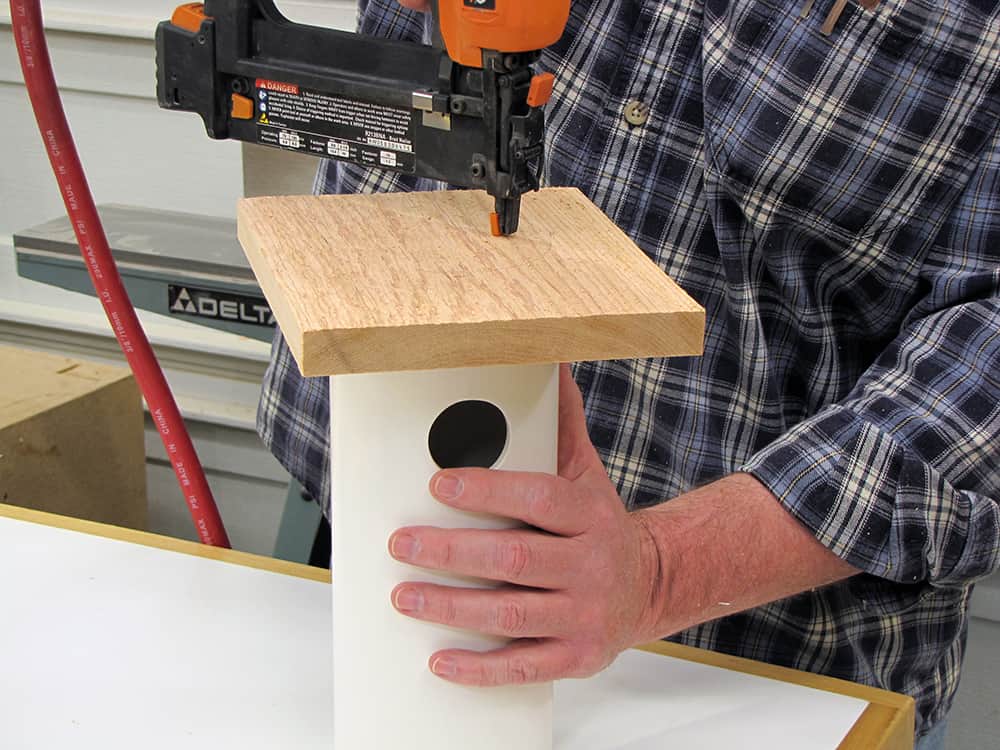A new use for PVC pipe!

by A.J. Hamler, excerpted from the March/April 2011 issue of Bird Watcher’s Digest
Many do-it-yourselfers use cedar and other natural materials for their construction projects. However, PVC pipe can also be used to make a birdhouse with minimal construction. Not only can PVC houses be made quickly—a boon if your goal is to install numerous birdhouses around a large property with a lot of acreage—but PVC houses are extremely resistant to weather. In fact, they’re nearly indestructible.
PVC is available in a variety of diameters, but stick with either 4″ or 6″ pipe. The PVC in these pipes also comes in different formulations depending on their intended use in home construction, but I’ve found that foam-core PVC is the best to work with for birdhouses. It’s very light, and although the inner and outer surfaces are hard, the interior is soft foam as the name implies, making it very easy to work with. Also, while PVC usually comes in minimum 8′ lengths, home centers often sell foam-core PVC pipe in shorter 24″ pieces, meaning you don’t have to buy full lengths.

I’ve sized this pipe house for bluebirds, and although most bluebird boxes are at least 4.5″ x 4.5″ on the inside I’ve found that the birds will eagerly use a house based on 4″ pipe. To offer a bit more room for nest material, I’ve raised the height of the entry hole a bit over that of a traditional bluebird box. Of course, PVC pipe can be adapted for just about any bird by adjusting the size of pipe used and the entry-hole size.
Start by cutting your pipe to length. This can be done with a jigsaw or band saw, but cutting a round object of this size can be cumbersome with power tools, so if you have any doubts then use a hand saw only. Never attempt to cut PVC pipe on a table saw. Fortunately, you’ll find that foam-core PVC cuts very easily by hand, as in Fig. 1.
Naturally, I’m cutting the pipe at a 10-degree angle to maintain my preferred roof slope. You can use a steeper angle if you’d like, or none at all. Note in Fig. 1 how I’ve opened my bench vise a few inches and rested the pipe in it for support as I cut. The vise jaws aren’t tight against the pipe, but the pipe nestles securely in the gap. I recommend supporting PVC pipe in this or a similar manner for both safety and to make it easier to work with.

All PVC pipe is printed with a variety of information—type, company names, usage warnings, etc.—but this printing is easily removed with mineral spirits or alcohol (Fig. 2). Once you’ve removed the markings, follow with a clean rag dampened with plain water to remove any residual alcohol. When you have the pipe clean, use a dark pencil to note the front of the house—because the house is perfectly round, this will help keep the orientation correct for the following steps.





I’ve had one of these for years and it is absolutely the very favorite of the House Wrens in the yard